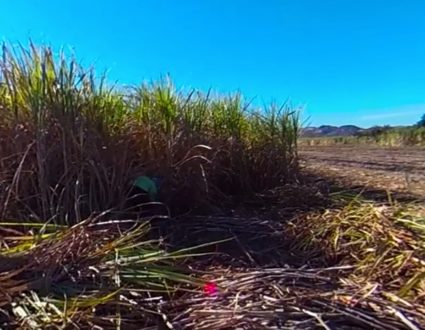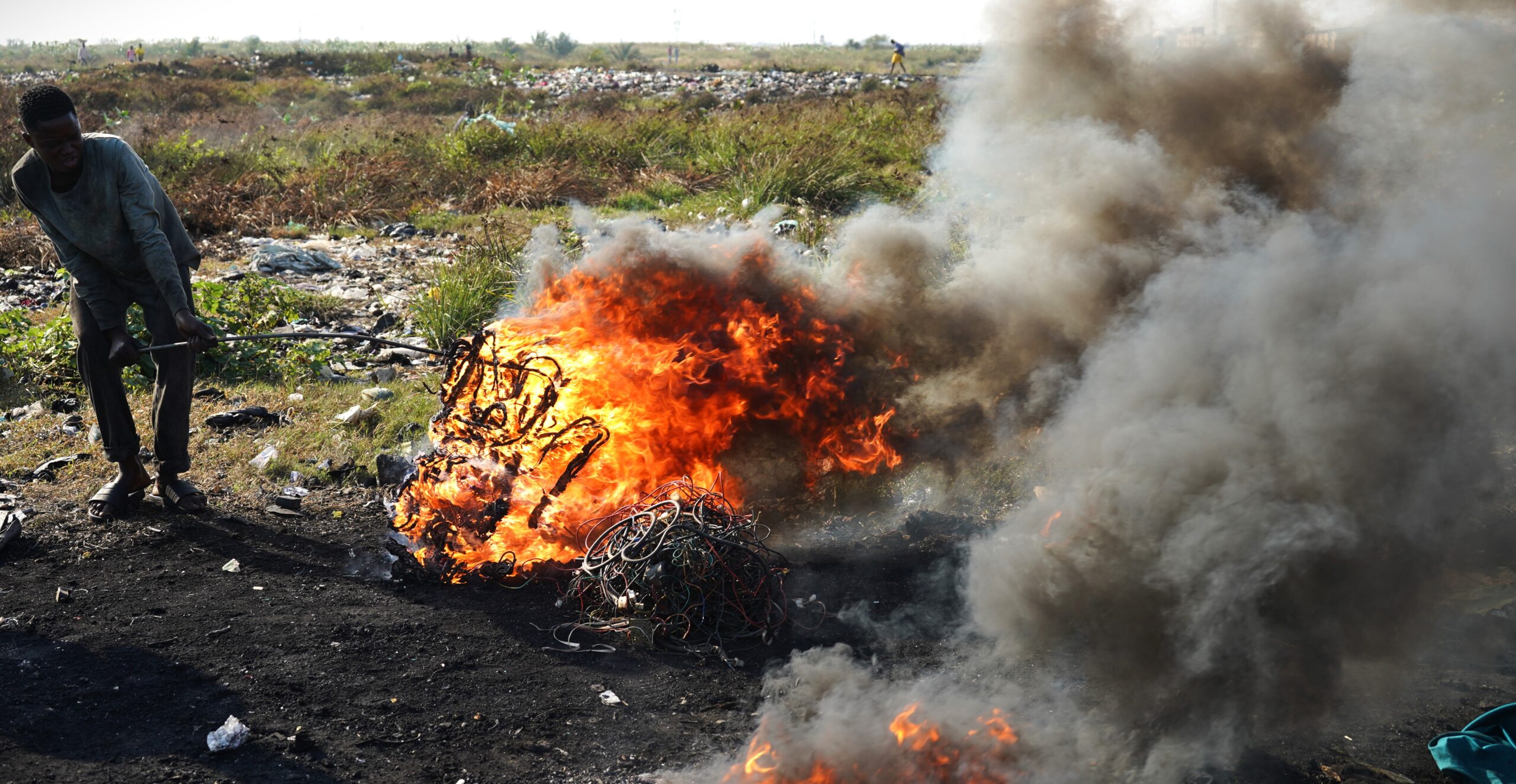Judy Woodruff:
In many Central American communities, a mysterious disease has affected farm workers who spend long, hot days in the field cutting sugarcane.
In his latest in a series of reports from El Salvador, special correspondent Fred de Sam Lazaro focuses on workers who are caught in the middle of trying to eke out a living while maintaining their health.
This report is part of Fred’s series Agents for Change.
Fred de Sam Lazaro:
The cutters begin early, trying to sneak a couple of hours before the tropical sun begins to scorch the sugarcane fields. It’s dirty, brutal work that requires the stamina of the young and physically fit, the exertion likened to running a half-marathon every day.
But 20 years ago, doctors began noticing an alarming increase in the number of these young workers across Central America who were coming into hospitals with a mysterious, ultimately fatal kidney ailment.
Dr. Ramon Garcia is a kidney specialist in El Salvador’s capital, San Salvador.
Dr. Ramon Garcia:
Seven to eight deaths every day in this small country is 10, 12 times more than the expected death rate. This is a silent massacre.
Fred de Sam Lazaro:
As Dr. Garcia and others began to investigate, they discovered that, on some farms, nearly one-fifth of sugarcane workers were suffering from chronic kidney disease, even though they had none of the usual risk factors, such as high blood pressure or diabetes.
Jose Monjares has been a cane cutter most of his adult life in the small coastal region that is the disease’s epicenter. His father and uncle died from it. He got his diagnosis seven years ago.
Jose Monjares (through translator):
It came on very suddenly, back pain, fever, vomiting.
Fred de Sam Lazaro:
The illness forced him to stop the grueling working as a cutter, so he now works as a field assistant. He needs the job, he says, even though the wages barely cover the cost of medications to slow the disease.
Jose Monjares (through translator):
I have to take care of myself and watch my diet, because, if I don’t, I will have to get dialysis, and that just means death.
Fred de Sam Lazaro:
Ramon Aguilar, who heads a cooperative of small farmers in the region, says at least 10 of his members died last year from kidney disease.
Ramon Aguilar (through interpreter):
There may have been others who died who weren’t diagnosed. Here in El Salvador, many people don’t want to recognize this disease and that an epidemic exists.
Fred de Sam Lazaro:
Dr. Garcia and other researchers, including a team from Boston University, have conducted several studies trying to determine the cause.
Initially, pesticides were considered a likely culprit, but there was no explanation why these chemicals didn’t have a similar impact in other places they are sprayed, including the United States.
Dr. Garcia says one thing they believe may be a contributing factor is the severe dehydration of the workers, which prevents the kidneys from functioning fully.
Dr. Ramon Garcia:
It’s too hot, simply too hot. You cannot drink enough water at the same pace that you are losing it in sweat. It’s impossible. We’re not sure if this is the real cause, the only cause, or there’s a mix of many causes that, put together, are producing the disease.
Fred de Sam Lazaro:
As researchers scramble to find the root cause of the disease, some groups are focusing on improving working conditions. Some regions of the world have mechanized cane harvesting. It lowers the financial cost, but would create a social one here, says Sebastian Teunissen of the Netherlands-based group Solidaridad.
Sebastian Teunissen:
Something has to change. And it could be mechanization. It could be that farmers work together in cooperatives, so they make effective use of the land. But that means that is going to be surplus labor. And one of the issues really is, where is that labor going to go in the coming decades?
Fred de Sam Lazaro:
His group and others try to coax workers to take regular rest breaks and shelter from the intense sun and to hydrate whether or not they are thirsty.
They also managed to get one of the largest sugar producers in the country to make this company policy. The problem is, just 8 percent of the sugar processed here comes from company land. Most comes from small farmers, 2,000 of them, says owner Juan Wright.
Juan Wright:
Just to convince people that the practice of resting and taking water with certain frequency, it’s hard to get across.
Fred de Sam Lazaro:
It’s not hard to understand why. Here in the field, there’s every incentive to just keep working, because taking a break comes at a direct personal cost to workers, who are paid not by the hour but, by how much cane they cut.
Man (through interpreterr):
Everyone has their own working styles. Sometimes, you don’t want to rest, but then your body hurts.
Fred de Sam Lazaro:
Solidaridad has also tried to introduce a new machete, designed in Australia to be more ergonomic so workers don’t need to bend as low as they swing it.
Omar Mazarigo (through interpreter):
It’s been a big improvement. Our arms are less tired. You can feel it in your entire body. It has let us cut more cane and have less effort to do so.
Jose Ramirez (through interpreter):
We’re having good productivity. But the blade is made of a different material, and it wears out a little faster.
Fred de Sam Lazaro:
That means workers have to stop more often, sometimes hourly, to sharpen their blade, which could mean losing up to a 10th of a day’s earnings. For others, struggling small farmers, the cost of the new machete is also a barrier.
Another idea is crop diversification.
Juan Wright:
This is the — the place where they ferment it.
Fred de Sam Lazaro:
Juan Wright has begun a pilot program of growing cocoa, which is grown in shade forests.
Juan Wright:
I personally think that cocoa complements sugarcane. Cocoa needs permanent trees. It means an agricultural forest that provides jobs in friendlier type of work environment.
Fred de Sam Lazaro:
But switching to new crops requires time and money that small farmers don’t have. It’s one reason Solidaridad’s Teunissen says change has come slowly in an industry long set in its ways, where a few large sugar mills get much of their raw material from small subsistence farmers.
Sebastian Teunissen:
A lot of modern business practices are not readily adopted, simply because tradition is so strong in this industry. Layer on top of that the fact that it’s regulated by the government, it’s so important to the economy, it’s not necessarily progressive in every case.
Fred de Sam Lazaro:
Meanwhile, Boston University has just begun a three-year study trying to further unlock the mystery of a condition that has claimed the lives of more than 25,000 Central American agricultural workers over the last two decades.
For the PBS NewsHour, I’m Fred de Sam Lazaro in Usulutan, El Salvador.
Judy Woodruff:
Fred’s reporting is a partnership with the Under-Told Stories Project at University of St. Thomas in Minnesota.
CKD
is wreaking havoc on farm workers in Central America, particularly those who harvest sugar. Despite the risks, Salvadoran cane cutters continue the grueling work, pushed by economic troubles. Special correspondent Fred de Sam Lazaro reports on how some are trying to improve work conditions in El Salvador.
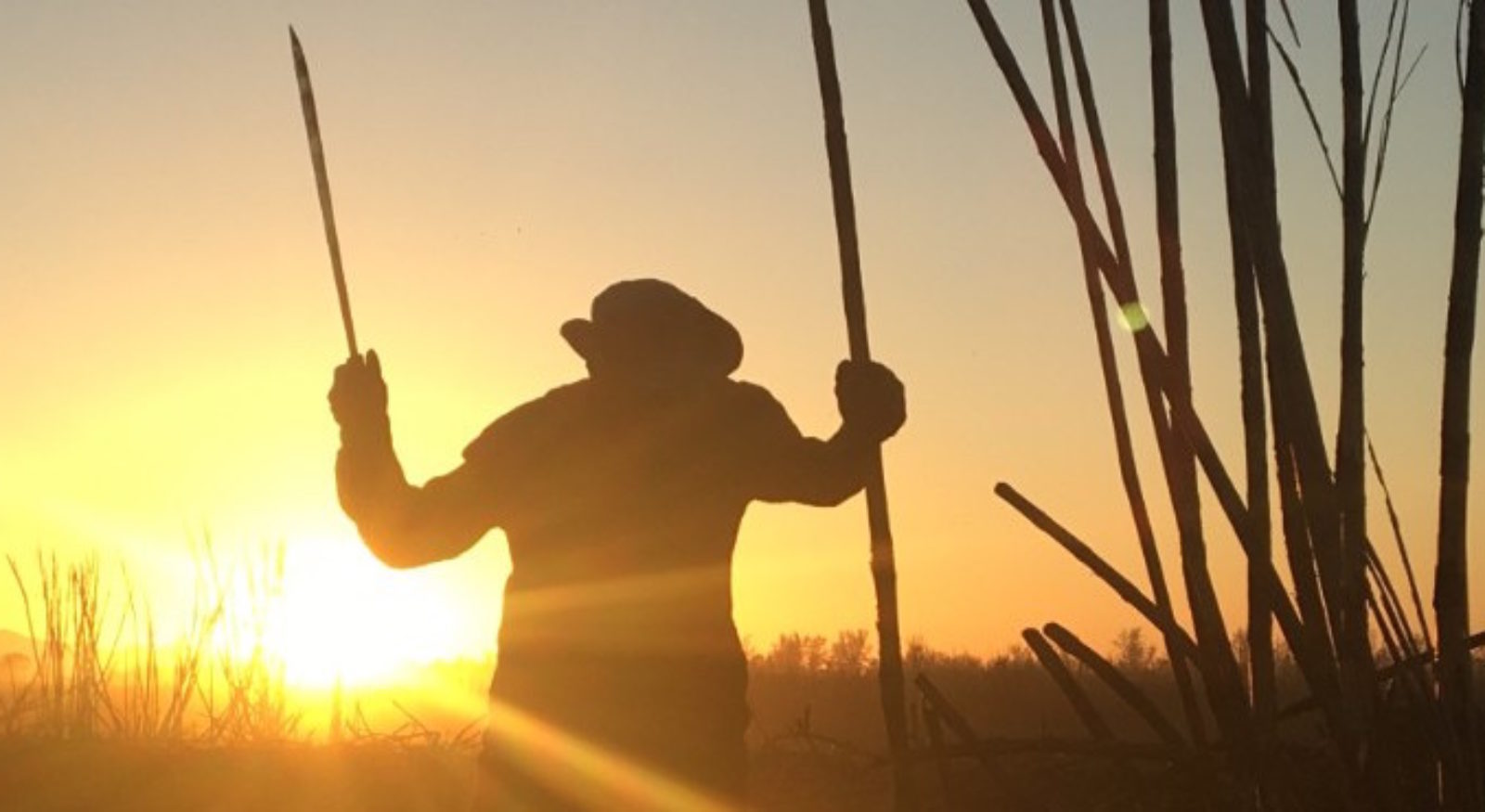
Dawn Till Dusk
Cane cutting is dirty, brutal work that requires the stamina of the young and physically fit, the exertion likened to running a half-marathon every day. Those who can’t work are quickly replaced in countries with high unemployment, like El Salvador.
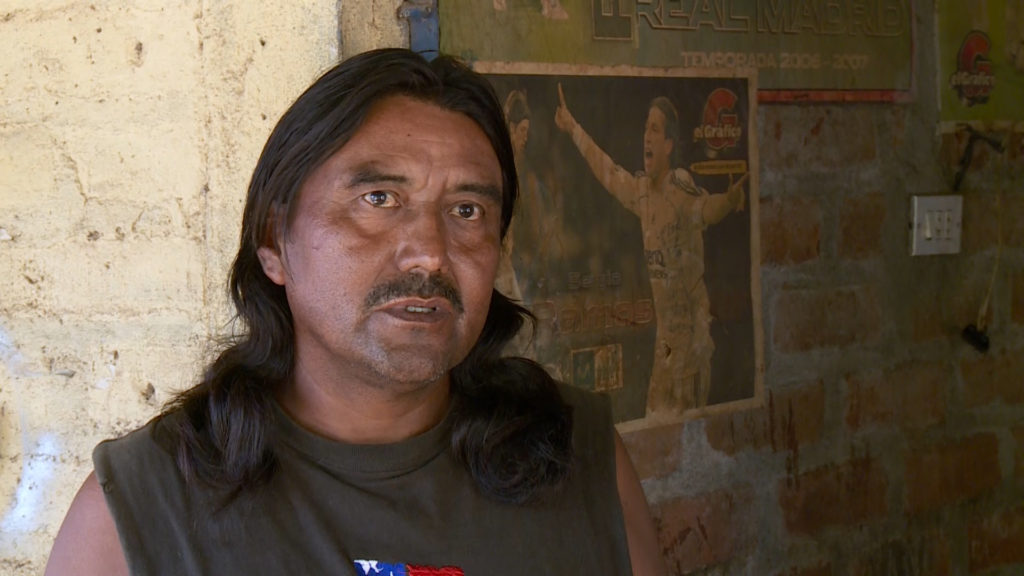
“It came on very suddenly, back pain, fever, vomiting.”
Jose Monjares has been a cane cutter most of his adult life in the small coastal region that is the disease’s epicenter. His father and uncle died from it. He got his diagnosis seven years ago. The illness forced him to stop the grueling working as a cutter, so he now works as a field assistant. He needs the job, he says, even though the wages barely cover the cost of medications to slow the disease.
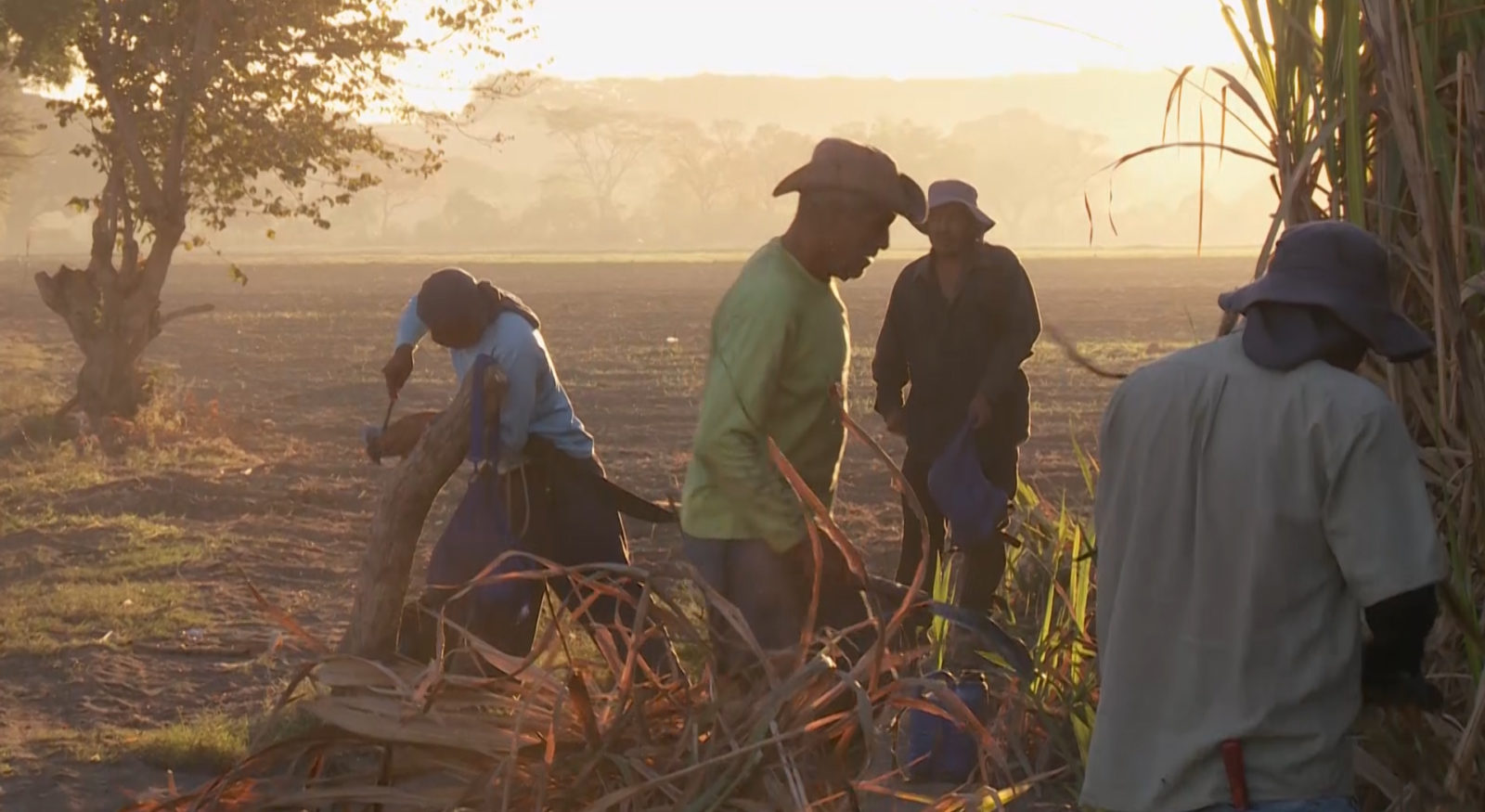
The Mystery
On some farms, nearly one-fifth of sugarcane workers were suffering from chronic kidney disease, even though they had none of the usual risk factors, such as high blood pressure or diabetes.

